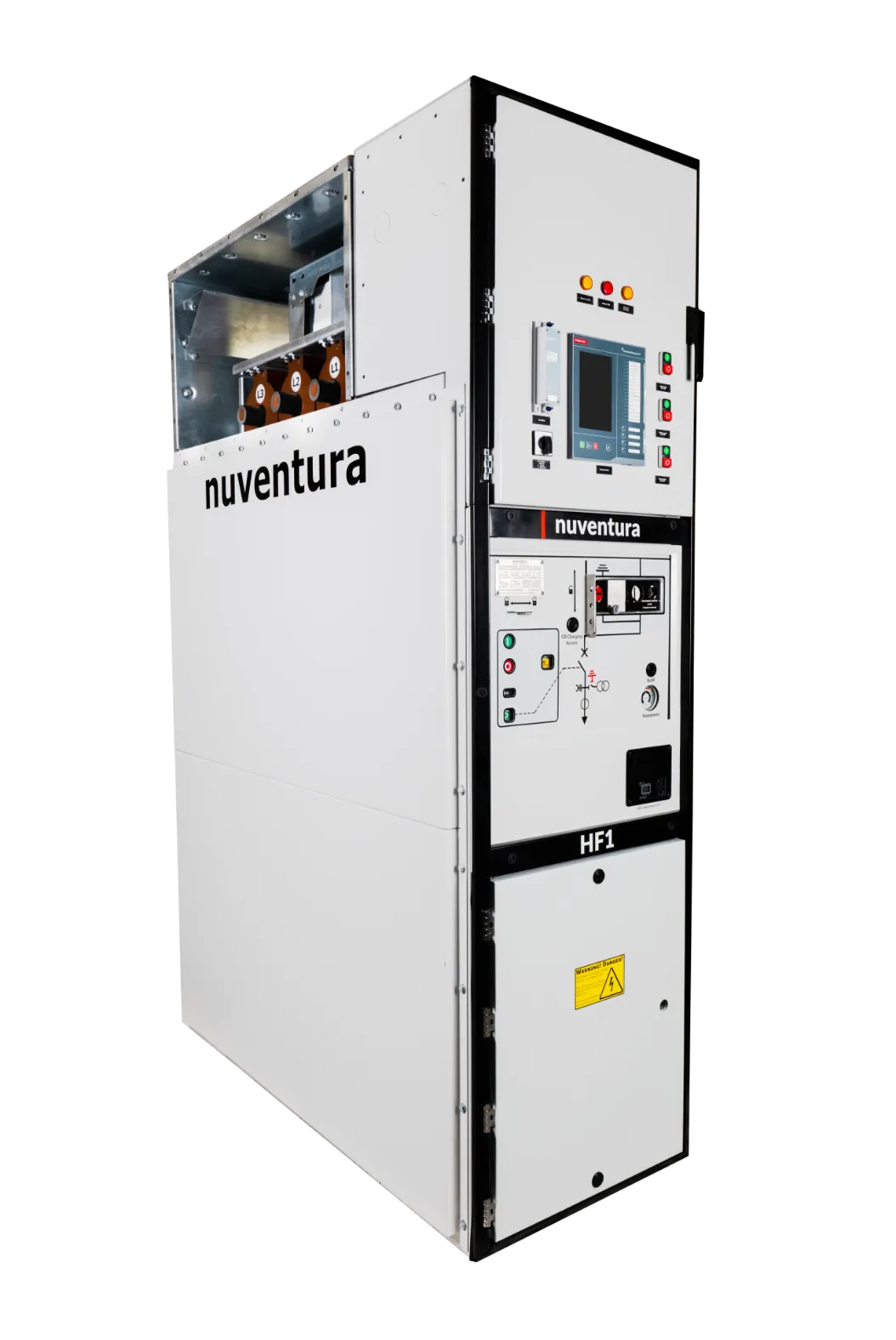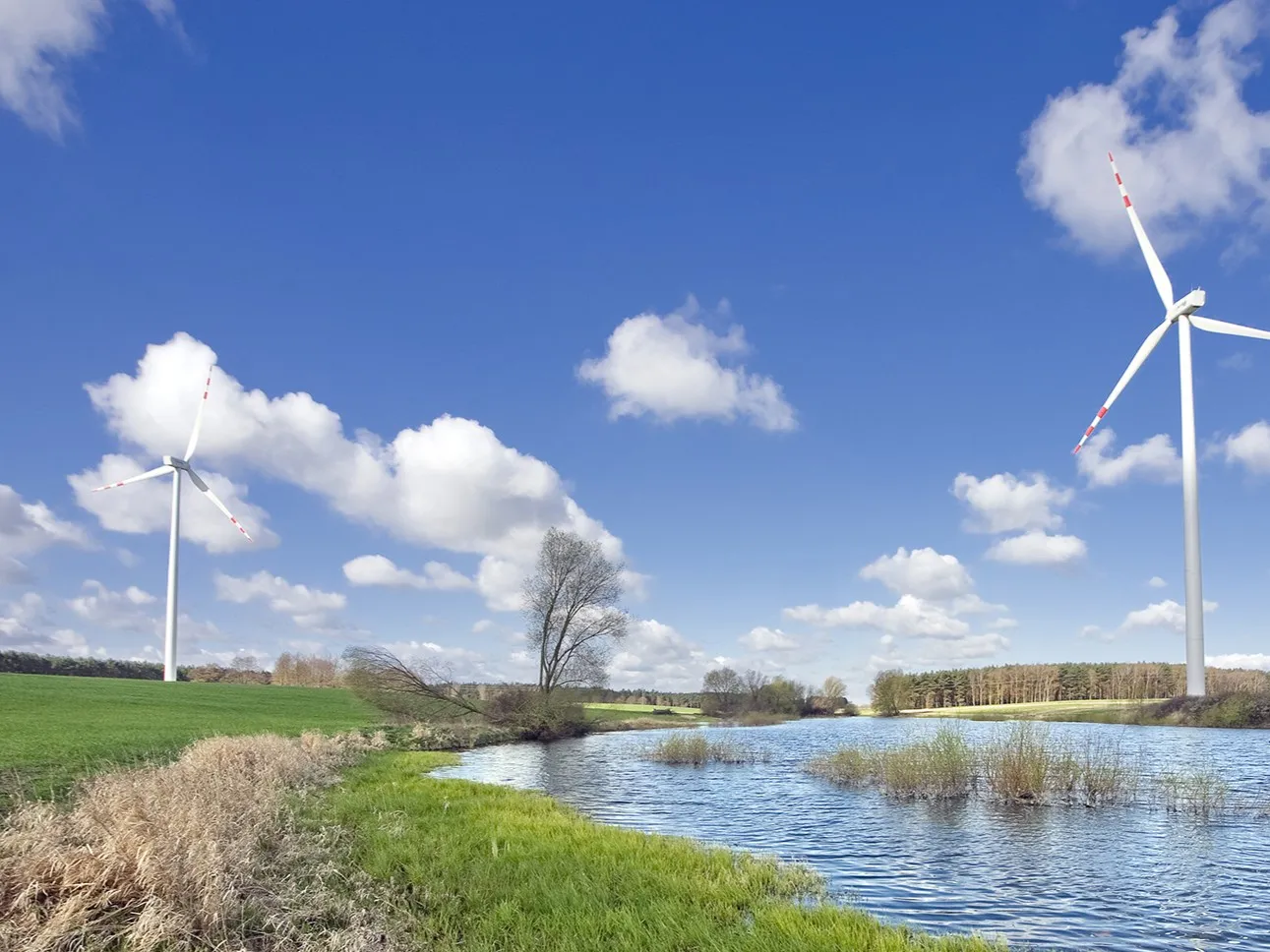Is SF₆ Putting Your Grid at Risk? 9 Things MV Project Leaders Need to Know Before 2026
If you build, plan, buy, or maintain mediumvoltage grid gear, this matters. The EU’s ban on SF₆ is coming — and fast. Here’s what you must know, and most importantly: proof that SF₆free tech isn’t just a promise, it’s already working.

For decades, SF₆ was the gold standard for medium-voltage (MV) switchgear. It was reliable, compact, and kept things running—until we realized it had a dirty little secret: it’s the world’s most potent greenhouse. Now the EU is pulling the plug.
With over €2.8 billion in annual MV switchgear procurement at stake across EU markets alone, understanding the technical and business implications of this transition has become essential for infrastructure decision-makers.
Whether you're a DSO, EPC, OEM, or project developer, this isn't just about climate goals — it's about staying compliant, avoiding procurement disasters, and future-proofing your infrastructure. The UK (expected) and several US states (notably California and New York) have already, or are in the process, of introducing similar legislation. Even countries without current bans are feeling the shift as global OEMs move their portfolios away from SF₆.
For engineers, procurement managers, and sustainability leaders, this marks a decisive shift. Let’s break down what the new F-Gas Regulation actually means—and what you can do to get ahead before 2026 (and definitely before 2030).
1. Regulatory compliance deadlines and obligations
EU Regulation (EU) 2024/573 sets binding phase-out dates for putting into operation new switchgear that uses fluorinated greenhouse gases as the insulation or breaking medium:
From 1 Jan 2026
MV switchgear for primary/secondary distribution ≤24 kV. (Official Journal of the European Union, 2024)
From 1 Jan 2028
HV switchgear 52–145 kV and ≤50 kA (for gases with GWP ≥1). (Official Journal of the European Union, 2024)
From 1 Jan 2032
HV switchgear >145 kV or >50 kA (for gases with GWP ≥1). (Official Journal of the European Union, 2024)
Operational obligations. Operators must prevent leaks and comply with leak-checking and record-keeping/labeling rules. Electrical switchgear is exempt from periodic leak checks only if it meets strict conditions (e.g., tested leakage rate <0.1%/yr or equipped with pressure/density monitoring with automatic alert).
Member States must establish penalties (administrative and/or criminal) for infringements by 1 Jan 2026; these must be effective, proportionate and dissuasive. (No EU-wide fixed amount is set.) (Official Journal of the European Union, 2024)
United Kingdom. The UK government plans a consultation on revising GB F-gas rules; alignment with EU timelines is likely. (ENA, 2024)
California (CARB). CARB’s GIE rule phases out SF₆ in new gas-insulated equipment from 2025, with reporting and inventory requirements. (CARB, 2025)

2. SF₆’s climate impact and financial exposure
Global warming potential (GWP)
On a 100-year basis, SF₆ has a GWP of 24,300 under the latest IPCC AR6 values (AR5 reported 23,500) (GHG Protocol, 2024).
Carbon cost illustration
At recent EU ETS prices of roughly €70–80/tCO₂e (e.g., ~€77/t on 19 Sep 2025), a 1 kg SF₆ leak implies ~€1,700–€1,950 in carbon-price exposure using AR6 (24.3 × price) (ICE, 2025).
Atmospheric lifetime. SF₆ persists for ~3,200 years, making abatement of leaks particularly consequential (EPA, 2023).
Leak rates in practice
Standards and field data indicate:
✓
✓
Utility commitments
Some TSOs/DSOs have public targets to reduce SF₆ emissions materially this decade (e.g., National Grid: –50% by 2030, aiming to eliminate SF₆ from assets by 2050).
3. Total Cost of Ownership Analysis Indicates 15-25% Lower Cost for SF₆-Free Solutions
While SF₆-based switchgear often appears economical up front, total cost of ownership (TCO) over its lifecycle can favour SF₆-free technologies once all operating, regulatory, and environmental costs are included.
Gas cost estimates
SF₆ gas (virgin, high purity) can cost in the range of €30-60/kg, depending on purity, delivery logistics, and handling.
Maintenance and compliance costs
Additional costs may include leak detection systems, specialized technician training, periodic inspections, and regulatory paperwork.
End-of-life recovery
Recovering, purifying, and disposing or reusing SF₆ at end of equipment life incurs further expenses, which under certain circumstances may be substantial.
Independent studies (e.g. industry scans of non-SF₆ gas-insulated technologies) show that SF₆-free switchgear can achieve TCO reductions of 20% over periods of 20-30 years in many contexts, particularly where leak rates are nontrivial, regulatory or carbon costs are high, or equipment operates in demanding conditions (Eaton, 2021).
Because SF₆-free solutions avoid gas management, leak detection and regulatory compliance burdens, they may offer more predictable cost profiles over long lifespans.
4. Procurement Specifications Increasingly Favor SF₆-Free Solutions
Across Europe, distribution system operators (DSOs) and project developers are increasingly signalling a preference for SF₆-free equipment in the MV range, where commercially proven alternatives now exist.
Utility preferences and pilots
In its 2024 position paper, E.DSO (representing 35 major DSOs including E.ON and Iberdrola’s i-DE) states that its members “prefer to use SF₆-free technologies wherever technically and commercially feasible.” Iberdrola’s i-DE is already testing SF₆-free equipment at ~24 kV secondary substations as part of this transition. (E.DSO, 2024)
Tender examples
Public procurement notices on the EU TED portal in 2024 include explicit references to SF₆-free MV switchgear in grid reinforcement projects, and ABB has received a framework order from E.ON for its SafeRing/SafePlus Air 24 kV SF₆-free GIS to support compliance with the upcoming ban on new SF₆-filled MV switchgear from 1 January 2026.
These developments reflect both market availability of SF₆-free MV products and the binding deadline in Regulation (EU) 2024/573, which prohibits placing on the market new ≤24 kV switchgear using SF₆ from 1 January 2026. Specifications are therefore expected to continue moving toward SF₆-free options in the MV segment where technically proven alternatives exist.


5. SF₆-Free Technology Have Achieved Commercial Maturity under IEC Certification
Nuventura and other OEMs now offer fully type-tested dry-air GIS that comply with IEC 62271-200. These SF₆-free systems have demonstrated performance metrics comparable to SF₆-based GIS in many applications.
Key verified technical specifications (Nuventura nu1 product line):
These dry-air GIS installations deliver substantial reductions in operational complexity (especially in eliminating SF₆ gas handling, leak monitoring, and associated regulatory obligations), while maintaining compact footprint designs suitable for medium-voltage primary substations.
6. Global regulatory and procurement momentum beyond Europe
Outside the EU, multiple jurisdictions and flagship projects are moving to restrict SF₆ in electrical equipment or to preference SF₆-free technology:
California (CARB)
Amended GIE regulations include a phase-out schedule from 2025 for new SF₆ gas-insulated equipment, expanded coverage to other insulating gases, and strengthened reporting (CARB, 2025).
New York (DEC)
Proposed 6 NYCRR Part 495 would establish standards, reporting, and phase-down/phase-out timelines for SF₆ in GIE, with obligations beginning in 2025 and phase-out milestones extending to the early 2030s (proposal stage) (New York, Department of Environmental Conservation, 2023).
Japan
National fluorocarbon laws are in place and industry roadmaps toward SF₆-free technologies exist, but no binding, EU-style SF₆ switchgear phase-out dates have been formalized. (Climate Action, 2020).
NEOM / ENOWA
(Saudi Arabia)
ENOWA’s “Grid of the Future” concept explicitly targets rapid deployment of non-SF₆ (n-SF₆) GIS and GIB as part of its adopted grid design, signalling a programmatic preference for SF₆-free equipment in a major greenfield system (Enowa, 2024).
Implication: While legal instruments vary by jurisdiction, both regulatory direction (e.g., CARB, NY DEC) and large-scale buyer specifications (e.g., ENOWA/NEOM concept) point to accelerating adoption of SF₆-free solutions beyond the EU.
7. Risk management analysis highlights advantages of early SF₆-free adoption
Organisations that begin transitioning to SF₆-free switchgear ahead of regulatory deadlines can plan their investments, train staff, and secure supply chains in an orderly way. Experience from other regulated phase-outs indicates that waiting until the last minute increases the likelihood of higher procurement costs, installation bottlenecks, and project delays.
Key risk-management benefits of proactive adoption include:
More predictable costs
Planned transitions allow staged procurement and competitive bidding, which typically reduces costs compared with urgent or unplanned replacements.
Lower operational disruption
Controlled implementation schedules minimise outage risks and allow integration into routine maintenance windows.
Supply-chain stability
Early engagement with OEMs and contractors secures delivery slots and favourable pricing terms before demand spikes.
Capacity building
Technical teams gain hands-on experience with the new technology under normal operating conditions, facilitating smoother roll-outs at scale.
8. Proven SF₆-free technology with documented field deployments
Nuventura’s nu1 medium-voltage gas-insulated switchgear is one of the first commercially available 24 kV/36 kV dry-air GIS systems fully type-tested to IEC 62271-200.
The nu1 switchgear eliminates SF₆ gas management obligations while maintaining compact dimensions comparable to traditional GIS. Its dry-air design allows the tank to be opened for upgrades or retrofits.
Example deployments

Utility Sector
Major deployments include Unison Networks in New Zealand and Enerjisa in Turkey.

Renewable Energy
For example, Windkraft Simonsfeld AG in Austria and Acciona in Spain.

Infrastructure Applications
Major deployments include Unison Networks in New Zealand and Enerjisa in Turkey.
These installations demonstrate consistent performance across varying environmental conditions, from Nordic climates to Mediterranean heat, with delivery schedules averaging 4-6 months which is shorter than many conventional GIS procurement cycles.
9. Technical specifications across field installations
✓
✓
✓
✓
With the EU’s Regulation (EU) 2024/573 already setting binding phase-out dates for new SF₆-filled medium-voltage switchgear (≤ 24 kV from January 2026; > 24 kV to ≤ 52 kV from January 2030), the transition to SF₆-free technology is no longer a future possibility but an ongoing process.
Adopting SF₆-free equipment ahead of these deadlines allows operators to plan their investments, secure supply chains and train personnel under normal operating conditions, rather than under last-minute constraints. With commercially proven products now available and clear regulatory timelines established, the case for SF₆-free infrastructure is well-defined.
Connect with our experts
Whether it’s SF₆-free switchgear specifications, partnership opportunities or support – our team is ready to answer your questions and find the right eco-friendly solution for your needs.

Do you have a specific request?
Get in touch

